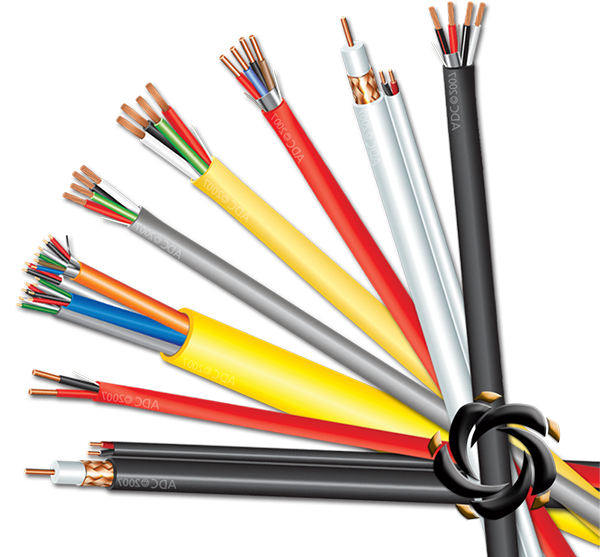The tri-shield construction of the RG59 Tri-Shield 75 Ohm Coaxial Cable is composed of three distinct shielding layers designed to create a comprehensive barrier against electromagnetic interference (EMI) and radio frequency interference (RFI). These layers typically consist of an inner aluminum foil shield, a tinned copper or aluminum braid, and an additional outer foil or braid. Each shielding layer addresses a specific range of frequencies—aluminum foil is most effective against high-frequency RFI, while the metallic braid provides superior protection against low-frequency EMI. The combination of these shielding types ensures coverage across a wide frequency range, significantly reducing the penetration of unwanted signals that can distort the transmitted video or data signal. In comparison with single-shielded and dual-shielded cables, the tri-shield configuration in RG59 offers increased isolation and dramatically improved signal cleanliness, especially in electrically noisy or densely cabled environments.
The fundamental advantage of coaxial cable design is its ability to contain the electromagnetic field of the signal within the cable’s internal structure. The tri-shielding of RG59 Tri-Shield 75 Ohm Coaxial Cable enhances this containment by minimizing both ingress (external interference entering the cable) and egress (signal leaking out of the cable). In real-world environments, external EMI sources such as industrial machinery, fluorescent lighting, transformers, and wireless transmitters can severely disrupt weak analog or digital signals. The multi-layer shielding of the RG59 Tri-Shield acts as a highly effective electromagnetic barrier, often likened to a Faraday cage, that prevents these external disturbances from corrupting the core signal. This means the transmitted signal maintains its intended waveform, fidelity, and timing characteristics from source to destination. The result is clearer video, cleaner audio, and more accurate data—critical in applications such as HD CCTV, baseband video distribution, and professional broadcast systems.
The performance of a cable's shielding is evaluated based on its Shielding Effectiveness Rating (SER), which measures the cable's ability to prevent EMI/RFI over a defined frequency range. A higher SER indicates greater immunity to external interference and more effective signal containment. In RG59 Tri-Shield 75 Ohm Coaxial Cable, the triple-layer design significantly improves this rating. The first foil layer provides 100% surface coverage, which is ideal for attenuating high-frequency RFI such as from Wi-Fi routers or cellular towers. The braided layer, typically 60%–95% coverage depending on construction quality, is better suited for combating low-frequency EMI from power lines and HVAC systems. The third shield—either another foil or additional braid—adds redundancy and further strengthens the barrier effect. Together, these layers reduce the coupling of external noise into the cable, preserving signal-to-noise ratio (SNR) and maintaining bandwidth integrity across extended cable runs.
In structured cabling systems or bundled installations, one common problem is cross-talk—interference caused by electromagnetic fields from adjacent cables. This becomes more likely as the number of cables increases or when signals are carried in close proximity over long distances. The tri-shielding in RG59 Tri-Shield 75 Ohm Coaxial Cable plays a vital role in suppressing this interference. By reinforcing the electromagnetic barrier around the core conductor, the cable greatly reduces its susceptibility to adjacent signal emissions. This makes the RG59 Tri-Shield particularly suitable for use in security camera installations where multiple video cables are routed together. The shielding ensures each video channel retains its clarity without interference from others. The shielding also supports the cable’s structural symmetry, which helps reduce impedance variations and signal reflections—two major contributors to signal degradation.
















